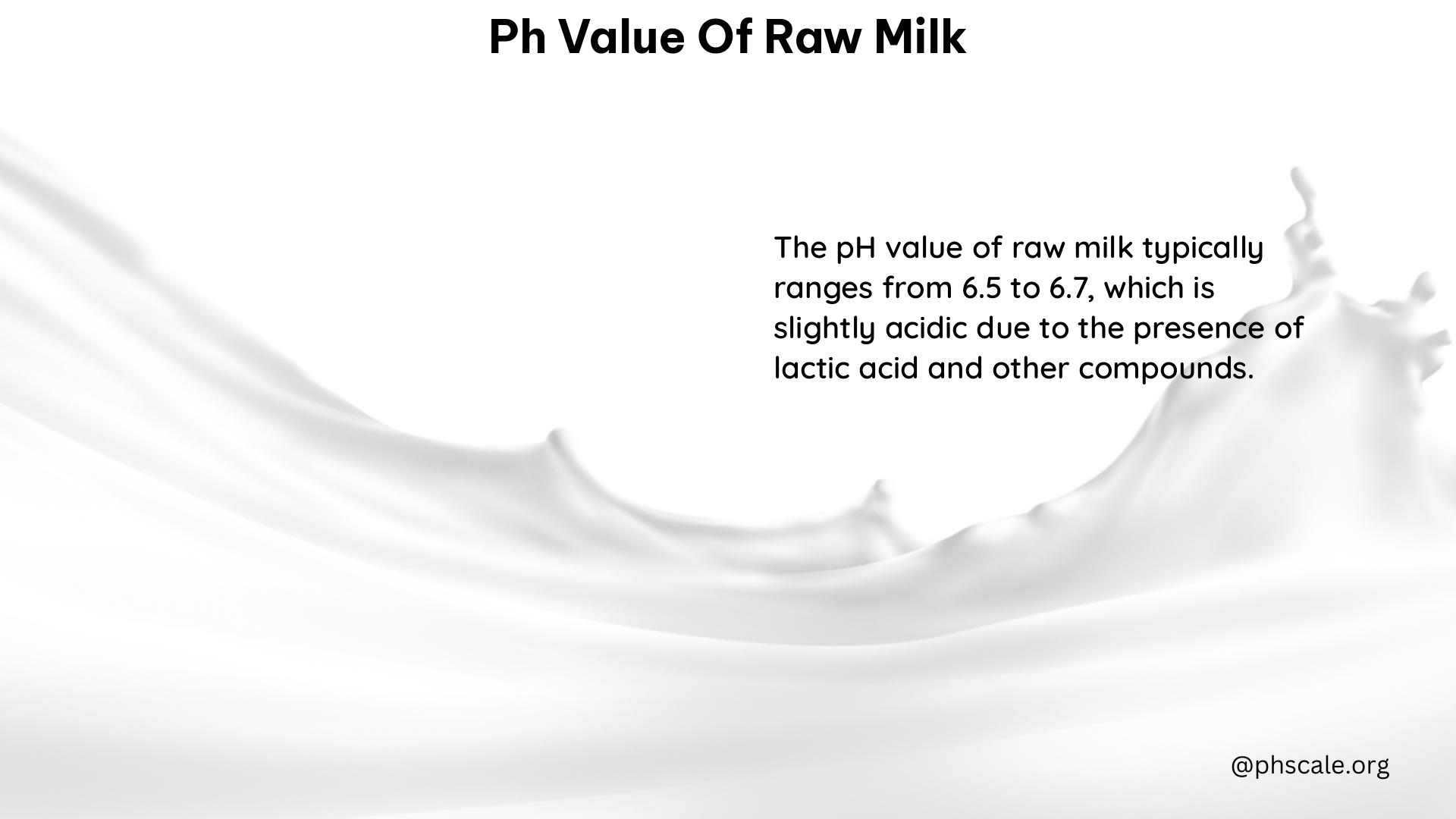The pH value of raw milk is a crucial factor that determines the quality, safety, and processing characteristics of this essential dairy product. Raw milk, which is milk that has not been pasteurized or homogenized, typically has a pH range of 6.5 to 6.7, making it slightly acidic. This slightly acidic nature is due to the presence of lactic acid, which is naturally produced by the lactose in milk.
Factors Affecting the pH of Raw Milk
Spoilage
As milk spoils, its pH decreases due to the production of lactic acid by bacteria. This can lead to a pH as low as 5.8 during slow freezing, indicating that the milk has gone bad and is no longer suitable for consumption.
Mastitis Infection
Milk from cows infected with mastitis, a common udder infection, can have a higher pH due to the presence of blood components, which are slightly alkaline. This change in pH can be an indicator of the cow’s health and the quality of the milk.
Freezing and Storage
The pH of milk can also be affected by freezing and storage. Slow freezing can lead to a decrease in pH, while fast freezing has little effect on the milk’s acidity.
Importance of pH Measurement in Milk Processing

Measuring the pH of milk is crucial in the milk processing industry. pH measurements can help detect impurities, spoilage, and signs of mastitis infection. A pH below 6.7 typically indicates spoilage, while a pH above 6.7 may indicate a mastitis infection.
pH measurements are also important in optimizing milk processing techniques, such as Ultra High Temperature (UHT) processing. Small variations from the ideal pH of 6.7 can affect the pasteurization process and the stability of the milk.
Testing the pH of Milk
The pH of milk can be measured using pH meters or pH-indicator strips. One popular method is the MQuant pH 0-14 Universal Indicator strips, which can be used in combination with the MQuant StripScan app to quickly and easily determine the pH of milk and milk products.
Balancing pH in the Body
Consuming milk can temporarily shift the body’s pH level. Milk is an acid-forming food, but the body is highly effective at maintaining a stable pH. Eating a balanced diet with both acid-forming and alkaline-forming foods helps maintain overall health and pH balance.
In conclusion, the pH value of raw milk is a crucial factor that affects the quality, safety, and processing characteristics of this essential dairy product. Understanding the factors that influence the pH of raw milk, as well as the importance of pH measurement in milk processing, is essential for ensuring the production of high-quality, safe, and nutritious milk products.
References:
- https://www.thoughtco.com/what-is-the-ph-of-milk-603652
- https://www.healthline.com/health/ph-of-milk
- https://www.sciencedirect.com/science/article/pii/S002203026189694X
- https://www.mediray.co.nz/media/15606/ds_hanna_ph_ha-hi99162_1p0_0415.pdf
- https://www.sigmaaldrich.com/US/en/technical-documents/protocol/analytical-chemistry/photometry-and-reflectometry/ph-of-milk-and-milk-products
